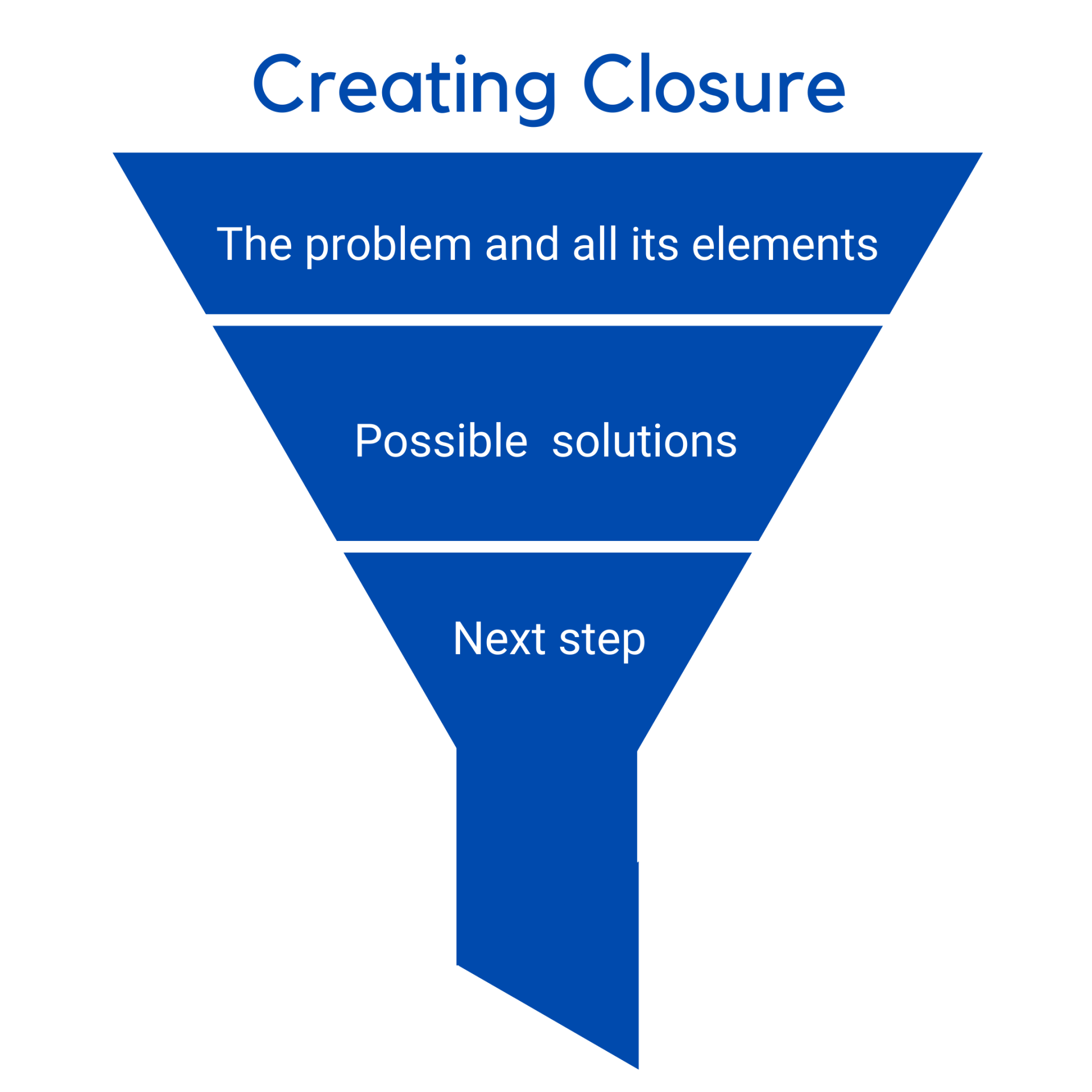When Managers Create Closure
Cathie Leimbach • August 12, 2020

How often do your conversations with team members lead to improved morale or greater productivity? How common is it for your team members to discuss a number of topics or generate several ideas but not determine any specific action steps? Maybe they expressed enthusiasm for several possible ways to improve performance but have implemented none of them. Why aren't they following through?
- As the manager, did you ask them at the end of the meeting which idea they were going to try this week?
- Did you follow up with them a few days later to see how well the new approach is working?
- As the manager, you have a responsibility to be clear about your expectations. If the purpose of your conversation is to improve productivity, ask each team member what they will do differently and when they will make the change.
- Also, ask what help they need from you to move forward with this plan. They might need training, access to additional software, or other resources to implement the new strategy.
- Be timely about checking in with them to see how well the change is going. They may have discovered some unexpected problems and need your support to work through them.
When you Create Closure at the end of a conversation or meeting, you are ensuring that you and your team members are on the same page. When they are clear on their next step, they can confidently move towards achieving team goals.
In most organizations, the instinct is to add —more goals, more projects, more meetings. But as Juliet Funt, founder of the Juliet Funt Group, teaches in her Strategic Choice process, real leadership strength lies in deciding what to stop doing . Strategic Choice is the intentional narrowing of priorities—cutting away the clutter so teams can focus on what truly drives results. It’s a disciplined act of letting go: saying no to good ideas so there’s room for the great ones. Funt’s approach challenges leaders to pause, think, and create the mental and operational space their people need to perform at their best. By removing unnecessary tasks and misplaced effort, leaders make room for precision, innovation, and real thinking time. This isn’t about doing less—it’s about doing what matters most. When businesses adopt this mindset, they replace overwhelm with clarity and regain control of their time, energy, and outcomes. For small to mid-sized companies, embracing Strategic Choice can transform busyness into focus—and that focus is where sustainable growth begins. Want a quick visual overview? View Strategic Choice: Making Room for What Matters to see how this process helps leaders focus on what truly drives results.

Hey team leaders! Ever wonder why some companies soar while others stumble? Patrick Lencioni's bestseller, The Five Dysfunctions of a Team , nails it: workplace dysfunctions such as no trust, fear of conflict, lack of commitment, avoiding accountability, and ignoring results lead to mediocre performance at best. But here's the good news—smart leadership development changes the game! Start with building trust . Train leaders to open up and be vulnerable. Teams bond, ideas flow, and costly mistakes drop. Next, embrace healthy conflict . Teach team leaders to make it safe for team members to share the pros and cons of current or new ways of doing things. This helps everyone understand different perspectives. Then, drive commitment . Leaders who clarify goals, ask everyone to share their level of buy-in, and address their concerns get everyone bought in. People focus on high value work and get more done. . Hold folks accountable through coaching. Leaders learn to give kind, direct feedback by praising good work and calmly providing more training as needed. Turnover plummets and the quality and quantity of work improves. Finally, focus on results . Be clear on expectations. Keep score by monitoring progress weekly or daily. Acknowledge team wins when the goals are met. Winning sports teams pay attention to these Five Behaviors of a Team. How would a World Series winner have been determined this week without trust among the players and coaches, openness to tough coaching, the whole team working together, players focusing on their specific positions, and getting players around the bases to get the top score? Every workplace can benefit from these team behaviors as well. Lencioni's research proves it: Companies who prepare their leaders to overcome these 5 common workplace dysfunctions, improve the culture and see huge financial gains. Invest in your leaders today. Your bottom line will thank you! Click here to learn more about the painful cost of team dysfunction.
